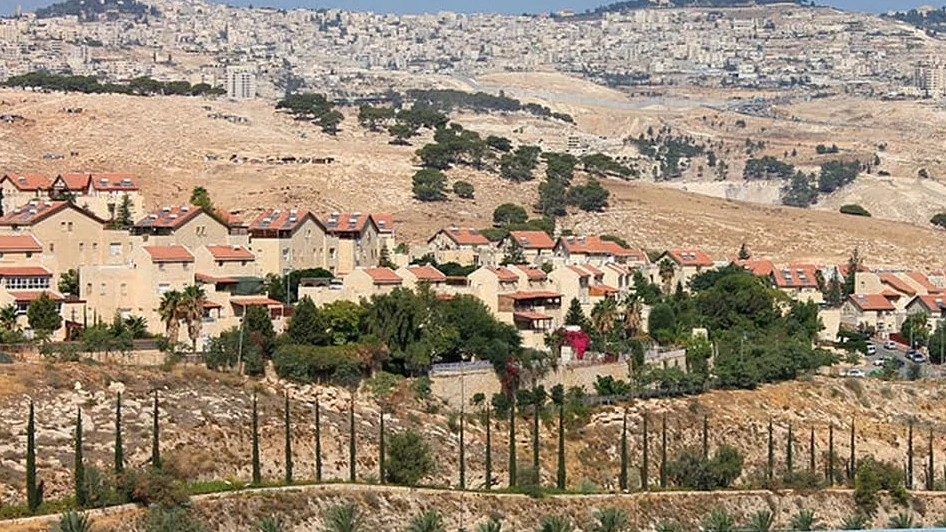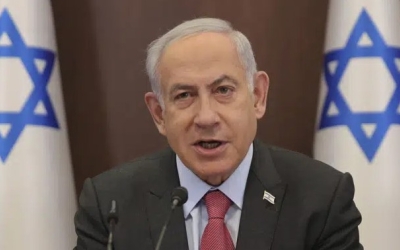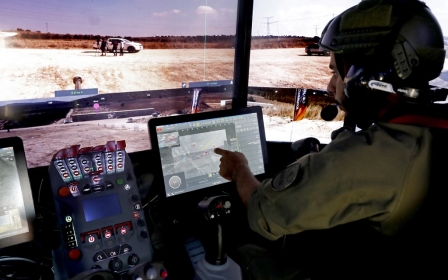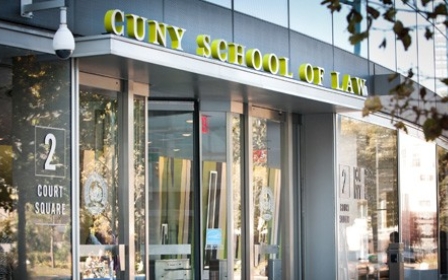Israel revives E1 settlement project 'splitting West Bank in two'

Israel is set to revive a plan to expand a settlement east of Jerusalem, which, if constructed, would divide the occupied West Bank in two.
The government's subcommittee for objections within the Higher Planning Committee of the Civil Administration, which authorises settlement constructions in the occupied West Bank, is set to meet next Monday to discuss plans for the E1 settlement project, which would see 3,412 housing units built for Jewish settlers in occupied Palestinian territory.
Building settlements in occupied territory is illegal under international law.
First approved in 2012, under a government led by current Prime Minister Benjamin Netanyahu, the plan was put on hold by consecutive Israeli administrations amid significant international pressure.
Now Israel’s most right-wing government, once again led by Netanyahu, is again looking to push through the proposals.
New MEE newsletter: Jerusalem Dispatch
Sign up to get the latest insights and analysis on Israel-Palestine, alongside Turkey Unpacked and other MEE newsletters
“It seems that Israel is really at a different stage from a political perspective,” said Alon Cohen Lifshitz from Bimkom, an Israeli human rights group of professional planners and architects, which is set to raise objections if the meeting goes ahead next week.
'Our main objection from an international law perspective is that it's a war crime'
- Alon Cohen Lifshitz, Bimkom
“Our main objection from an international law perspective is that it's a war crime. Within the areas of the boundaries in the plan are three communities. The approval of the plans will create a forcible transfer of these communities who were there before the plans were even approved,” Lifshitz told Middle East Eye.
The Israeli government plan involves building hundreds of units to link the settlements of Kfar Adumim and Maale Adumim with occupied East Jerusalem in the Israeli-controlled Area C of the West Bank.
The plan would effectively split the West Bank in half, isolating East Jerusalem from Palestinian communities in the West Bank and force Palestinians to make even lengthier detours to travel from one place to another while allowing for settlements housing Israelis to expand.
Besides the objection that such settlements are against international law, Lifshitz believes that there is no rationale for expanding the settlements.
“Since we submitted our objections in August 2020 around 2,000 people have left Maale Adumim. The natural growth of these settlements is negative,” added Lifshitz.
The expansion of Israeli settlements in the West Bank has left a patchwork of increasingly divided Palestinian communities in the occupied territory, making the viability of a future Palestinian state more unlikely.
It also creates what Israelis have termed "facts on the ground", an argument Israel has used in the past to push for the inclusion of settlements on Palestinian land as part of Israel in any future final status negotiations between Israelis and Palestinians.
While Maale Adumim represents the most visible attempt for such a project, Lifshitz said that the “whole West Bank is fragmented by settlements all over, that creates a matrix of control scattered over the occupied territories”.
Even if Maale Adumim is not built, “I don't see there being a strong connection between the north and the south of the West Bank,” added Lifshitz.
Isolating Jerusalem
In 2020 Israel appeared set to unilaterally annex parts of the West Bank, including settlements around East Jerusalem such as Maale Adumim.
Those plans never materialised after international pressure - the United Arab Emirates had said that a "suspension" of Israeli annexation plans was part of the normalisation deal between the two countries that same year, despite Israeli denials.
The E1 area that Israel is proposing to build “is the only land reserve in the Bethlehem-Jerusalem-Ramallah metropolitan area that enables continuity of urban uses between East Jerusalem and the rest of the [Palestinian] metropolitan area,” Mauricio Lapchik from Peace Now, an Israeli a left-wing group that is working towards a two state solution along the 1967 borders, told MEE.
“Israeli construction in E1 will harm the economic and public centre of the West Bank and will turn East Jerusalem into an enclave in the area. It is also a focal point for the entire West Bank due to its ability to connect major Palestinian population centres in the central north-south strip from Jenin to Hebron and in the central east-west continuum from Jerusalem to Jericho,” added Lapchik.
Peace Now is also set to make objections if the Israeli planning committee goes ahead next week.
A joint communique published after a February Israeli-Palestinian summit in Jordan said that Israel had committed to "stop discussion of any new settlement units for four months and to stop authorization of any outposts for six months".
However, following pressure from far-right coalition partners, Netanyahu subsequently insisted he had not agreed to suspend settlement building.
The E1 area is the only site around Jerusalem that can serve a variety of purposes such as “integrated construction of residence, employment, and public buildings in a unified manner on a large scale, as well as public infrastructure and public complexes such as sports,” said Lapchik.
For Palestinians a contiguous zone means there is an opportunity to create a “dense and direct network of roads through az-Za'ayyem and from there to Al-Eizariya and from there to Silwan and the Old City, and of course to the entire eastern [part of Jerusalem]. Such an intensive and continuous urban fabric is walkable and creates community and economic ties throughout the city,” added Lapchik.
“There is no substitute for E1 as a land reserve in the East Jerusalem metropolitan area with the necessary characteristics,” he added.
Middle East Eye delivers independent and unrivalled coverage and analysis of the Middle East, North Africa and beyond. To learn more about republishing this content and the associated fees, please fill out this form. More about MEE can be found here.






